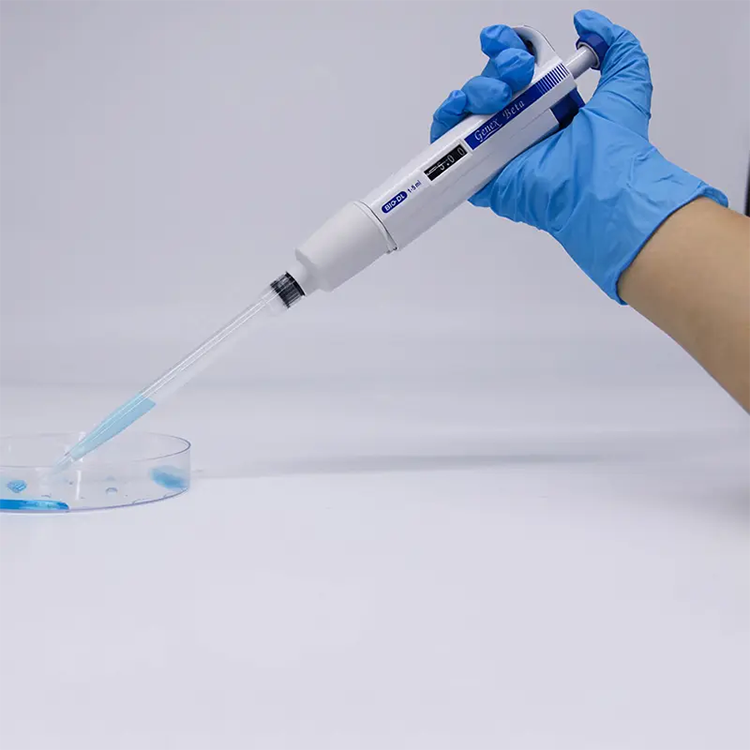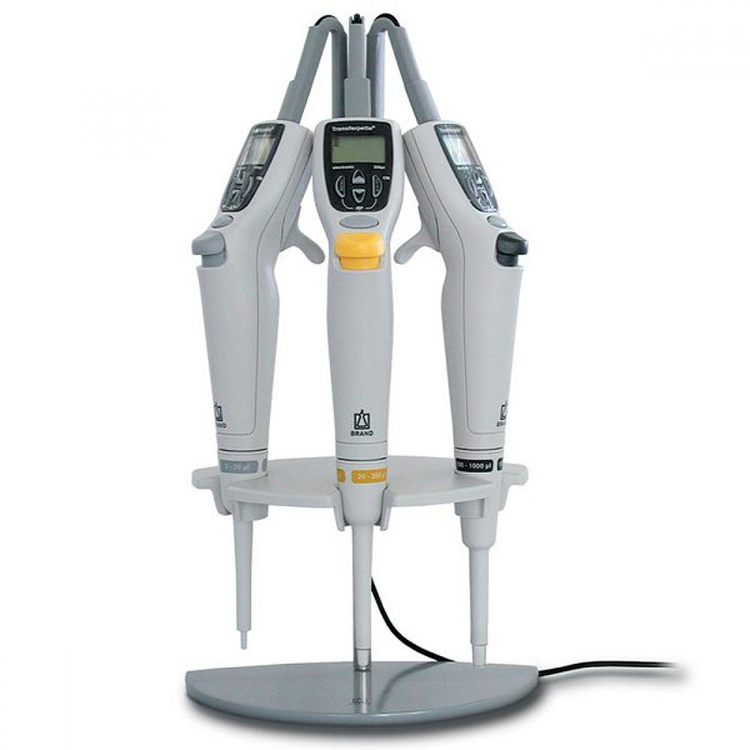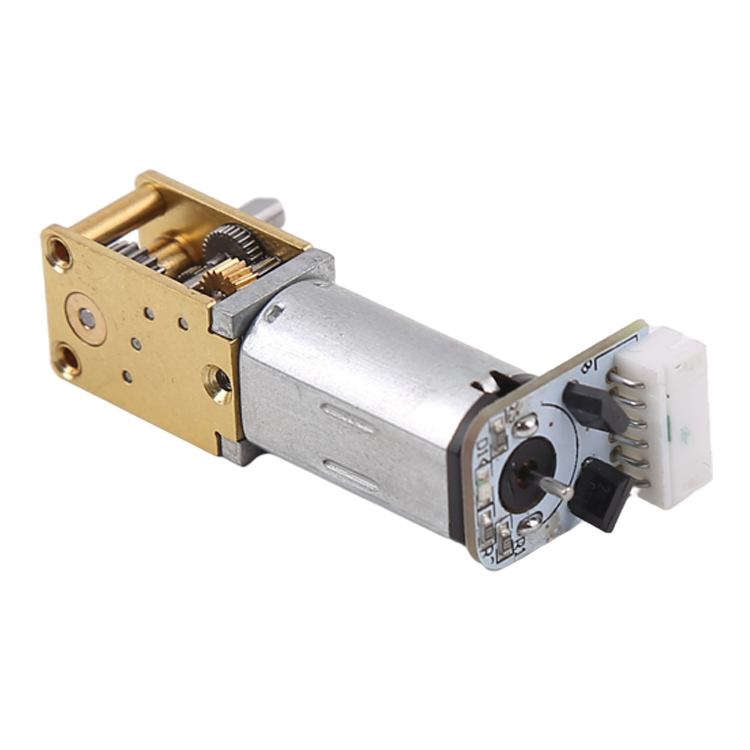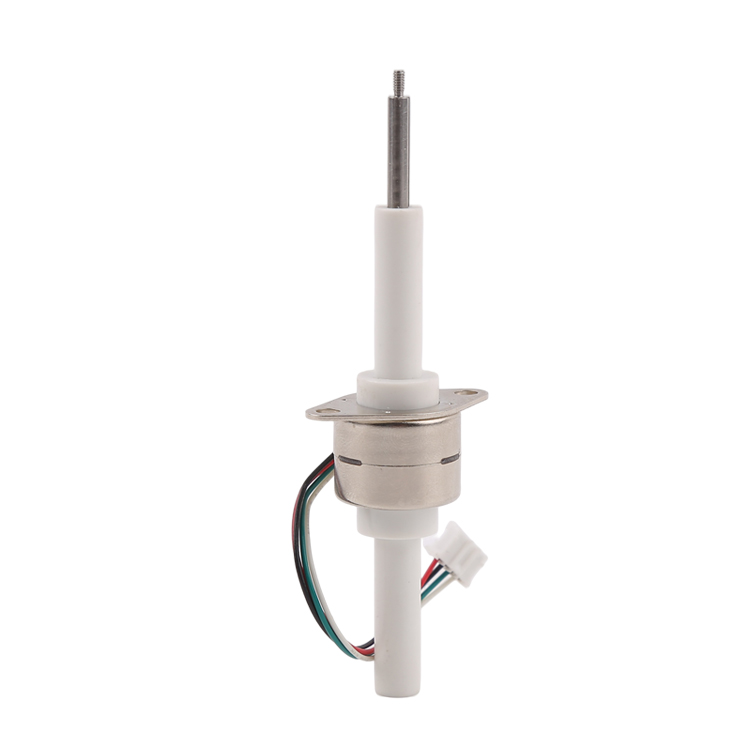ଯେକୌଣସି ତରଳ ପଦାର୍ଥର ଏକ ନିର୍ଦ୍ଦିଷ୍ଟ ଆୟତନ ମାପ ଏବଂ ବଣ୍ଟନ କରିବା ସମୟରେ, ଆଜିର ପରୀକ୍ଷାଗାର ପରିବେଶରେ ପାଇପେଟ୍ ଅପରିହାର୍ଯ୍ୟ। ପରୀକ୍ଷାଗାରର ଆକାର ଏବଂ ବଣ୍ଟନ କରିବାକୁ ଥିବା ଆୟତନ ଉପରେ ନିର୍ଭର କରି, ସାଧାରଣତଃ ବିଭିନ୍ନ ପ୍ରକାରର ପାଇପେଟ୍ ବ୍ୟବହୃତ ହୁଏ:
- ବାୟୁ ବିସ୍ଥାପନ ପାଇପେଟ୍ସ
- ସକାରାତ୍ମକ ବିସ୍ଥାପନ ପାଇପେଟ୍ସ
- ମିଟରିଂ ପାଇପେଟ୍ସ
- ଆଡଜଷ୍ଟେବଲ୍ ରେଞ୍ଜ ପାଇପେଟ୍ସ
୨୦୨୦ ମସିହାରେ, ଆମେ COVID-19 ବିରୁଦ୍ଧରେ ଯୁଦ୍ଧରେ ବାୟୁ ବିସ୍ଥାପନ ମାଇକ୍ରୋପିପେଟ୍ ଏକ ଗୁରୁତ୍ୱପୂର୍ଣ୍ଣ ଭୂମିକା ଗ୍ରହଣ କରୁଥିବା ଦେଖିବା ଆରମ୍ଭ କରୁଛୁ, ଏବଂ ସେଗୁଡ଼ିକୁ ରୋଗଜୀବାଣୁ ଚିହ୍ନଟ ପାଇଁ ନମୁନା ପ୍ରସ୍ତୁତି ପାଇଁ ବ୍ୟବହାର କରାଯାଏ (ଯଥା, ପ୍ରକୃତ-ସମୟ RT-PCR)। ସାଧାରଣତଃ, ଦୁଇଟି ଭିନ୍ନ ଡିଜାଇନ୍ ବ୍ୟବହାର କରାଯାଇପାରିବ, ମାନୁଆଲ୍ କିମ୍ବା ମୋଟରଚାଳିତ ବାୟୁ ବିସ୍ଥାପନ ପାଇପେଟ୍।
ମାନୁଆଲ୍ ଏୟାର ଡିସପ୍ଲେସମେଣ୍ଟ ପାଇପେଟ୍ ବନାମ ମୋଟରାଇଜଡ୍ ଏୟାର ଡିସପ୍ଲେସମେଣ୍ଟ ପାଇପେଟ୍
ଏକ ବାୟୁ ବିସ୍ଥାପନ ପାଇପେଟର ଉଦାହରଣରେ, ବାୟୁ ସ୍ତମ୍ଭ ଉପରେ ନକାରାତ୍ମକ କିମ୍ବା ଧନାତ୍ମକ ଚାପ ସୃଷ୍ଟି କରିବା ପାଇଁ ପିପେଟ ଭିତରେ ଏକ ପିଷ୍ଟନକୁ ଉପରକୁ କିମ୍ବା ତଳକୁ ଘୁଞ୍ଚାଯାଏ। ଏହା ବ୍ୟବହାରକାରୀଙ୍କୁ ଏକ ନିଷ୍କ୍ରିୟ ପାଇପେଟ ଟିପ୍ ବ୍ୟବହାର କରି ତରଳ ନମୁନାକୁ ନିଶ୍ୱାସ ନେବା କିମ୍ବା ବାହାର କରିବାକୁ ଅନୁମତି ଦିଏ, ଯେତେବେଳେ ଟିପ୍ ରେ ଥିବା ବାୟୁର ସ୍ତମ୍ଭ ତରଳକୁ ପିପେଟର ଅଣ-ନିଷ୍କ୍ରିୟ ଅଂଶଗୁଡ଼ିକରୁ ପୃଥକ କରିଥାଏ।
ପିଷ୍ଟନର ଗତିକୁ ଅପରେଟର ଦ୍ୱାରା ହାତରେ କିମ୍ବା ଇଲେକ୍ଟ୍ରୋନିକ୍ ଭାବରେ କରାଯିବା ପାଇଁ ଡିଜାଇନ୍ କରାଯାଇପାରିବ, ଅର୍ଥାତ୍ ଅପରେଟର ଏକ ପୁସ୍ ବଟନ୍ ନିୟନ୍ତ୍ରିତ ମୋଟର ବ୍ୟବହାର କରି ପିଷ୍ଟନକୁ ଘୁଞ୍ଚାନ୍ତି।

ହସ୍ତକୃତ ପାଇପେଟର ସୀମା
ଦୀର୍ଘ ସମୟ ଧରି ହାତରେ ପିପେଟ୍ ବ୍ୟବହାର କରିବା ଦ୍ଵାରା ଅପରେଟରଙ୍କୁ ଅସ୍ୱସ୍ତି ଏବଂ ଆଘାତ ମଧ୍ୟ ହୋଇପାରେ। ତରଳ ପଦାର୍ଥ ବାହାର କରିବା ଏବଂ ପିପେଟ୍ ଟିପ୍ ବାହାର କରିବା ପାଇଁ ଆବଶ୍ୟକ ବଳ, କିଛି ଘଣ୍ଟା ଧରି ବାରମ୍ବାର ପୁନରାବୃତ୍ତି ଗତିବିଧି ସହିତ, ସନ୍ଧି, ବିଶେଷକରି ବୁଢ଼ା ଆଙ୍ଗୁଠି, କହୁଣୀ, କଣ୍ଠା ଏବଂ କାନ୍ଧକୁ RS (I ପୁନରାବୃତ୍ତି ମାଂସପେଶୀ ଚାପ) ବିପଦରେ ବୃଦ୍ଧି କରିପାରେ।
ମାନୁଆଲ୍ ପାଇପେଟ୍ଗୁଡ଼ିକରେ ତରଳ ପଦାର୍ଥ ମୁକ୍ତ କରିବା ପାଇଁ ଥମ୍ବ ବଟନ୍ ଦବାଇବାକୁ ପଡ଼ିଥାଏ, ଯେତେବେଳେ ଇଲେକ୍ଟ୍ରୋନିକ୍ ପାଇପେଟ୍ଗୁଡ଼ିକ ଏହି ଉଦାହରଣରେ ଏକ ଇଲେକ୍ଟ୍ରୋନିକ୍ ଟ୍ରିଗର୍ ବଟନ୍ ସହିତ ଉତ୍ତମ ଏରଗୋନୋମିକ୍ସ ପ୍ରଦାନ କରନ୍ତି।
ଇଲେକ୍ଟ୍ରୋନିକ୍ ବିକଳ୍ପଗୁଡିକ
ଇଲେକ୍ଟ୍ରୋନିକ୍ କିମ୍ବା ମୋଟରାଇଜ୍ଡ ପାଇପେଟ୍ ହେଉଛି ମାନୁଆଲ୍ ପାଇପେଟ୍ ପାଇଁ ଏରଗୋନୋମିକ୍ ବିକଳ୍ପ ଯାହା ପ୍ରଭାବଶାଳୀ ଭାବରେ ନମୁନା ଆଉଟପୁଟ୍ ଉନ୍ନତ କରେ ଏବଂ ସଠିକତା ଏବଂ ସଠିକତା ସୁନିଶ୍ଚିତ କରେ। ପାରମ୍ପରିକ ଥମ୍ବ-ନିୟନ୍ତ୍ରିତ ବଟନ୍ ଏବଂ ମାନୁଆଲ୍ ଭଲ୍ୟୁମ୍ ଆଡଜଷ୍ଟମେଣ୍ଟ ପରି ନୁହେଁ, ବୈଦ୍ୟୁତିକ ପାଇପେଟ୍ ଏକ ଡିଜିଟାଲ୍ ଇଣ୍ଟରଫେସ୍ ସହିତ ଆସିଥାଏ ଯାହା ଏକ ବୈଦ୍ୟୁତିକ ଚାଳିତ ପିଷ୍ଟନ୍ ମାଧ୍ୟମରେ ଭଲ୍ୟୁମ୍ ଏବଂ ଆସ୍ପିରେଟ୍ ଏବଂ ଡିସ୍ଚାର୍ଜକୁ ଆଡଜଷ୍ଟ କରିଥାଏ।

ଇଲେକ୍ଟ୍ରୋନିକ୍ ପାଇପେଟ୍ ପାଇଁ ମୋଟର ଚୟନ
ପାଇପେଟିଂ ପ୍ରାୟତଃ ଏକ ବହୁ-ପଦକ୍ଷେପ ପ୍ରକ୍ରିୟାର ପ୍ରଥମ ପଦକ୍ଷେପ ହୋଇଥିବାରୁ, ତରଳ ପଦାର୍ଥର ଏହି ଛୋଟ ଅଂଶକୁ ମାପ କରିବା ସମୟରେ ଘଟୁଥିବା ଯେକୌଣସି ତ୍ରୁଟି କିମ୍ବା ଅପୂର୍ଣ୍ଣତା ସମଗ୍ର ପ୍ରକ୍ରିୟାରେ ଅନୁଭବ କରାଯାଇପାରେ, ଯାହା ଶେଷରେ ସାମଗ୍ରିକ ସଠିକତା ଏବଂ ସଠିକତାକୁ ପ୍ରଭାବିତ କରିଥାଏ।
ସଠିକତା ଏବଂ ସଠିକତା କ’ଣ?
ଯେତେବେଳେ ଏକ ପିପେଟ୍ ସମାନ ପରିମାଣକୁ ବହୁବାର ବିତରିତ କରେ ସେତେବେଳେ ସଠିକତା ହାସଲ ହୁଏ। ଯେତେବେଳେ ପିପେଟ୍ କୌଣସି ତ୍ରୁଟି ବିନା ଲକ୍ଷ୍ୟ ପରିମାଣକୁ ସଠିକ ଭାବରେ ବିତରିତ କରେ ସେତେବେଳେ ସଠିକତା ହାସଲ ହୁଏ। ସମାନ ସମୟରେ ସଠିକତା ଏବଂ ସଠିକତା ହାସଲ କରିବା କଷ୍ଟକର, ତଥାପି ପିପେଟ୍ ବ୍ୟବହାର କରୁଥିବା ଶିଳ୍ପଗୁଡ଼ିକ ପାଇଁ ସଠିକତା ଏବଂ ସଠିକତା ଉଭୟ ଆବଶ୍ୟକ ହୁଏ। ପ୍ରକୃତରେ, ଏହି ଅତ୍ୟନ୍ତ ଉଚ୍ଚ ମାନଦଣ୍ଡ ହିଁ ପରୀକ୍ଷାମୂଳକ ଫଳାଫଳଗୁଡ଼ିକୁ ପୁନଃଉତ୍ପାଦନ କରିବା ସମ୍ଭବ କରିଥାଏ।
ଯେକୌଣସି ଇଲେକ୍ଟ୍ରୋନିକ୍ ପାଇପେଟର ହୃଦୟ ହେଉଛି ଏହାର ମୋଟର, ଯାହା ପ୍ୟାକେଜ୍ ଆକାର, ଶକ୍ତି ଏବଂ ଓଜନ ଭଳି ଅନ୍ୟାନ୍ୟ ଗୁରୁତ୍ୱପୂର୍ଣ୍ଣ କାରଣ ସହିତ ପାଇପେଟର ସଠିକତା ଏବଂ ସଠିକତାକୁ ଗୁରୁତ୍ୱପୂର୍ଣ୍ଣ ଭାବରେ ପ୍ରଭାବିତ କରେ। ପାଇପେଟ୍ ଡିଜାଇନ୍ ଇଞ୍ଜିନିୟରମାନେ ମୁଖ୍ୟତଃ ଷ୍ଟେପର୍ ଲିନିଅର୍ ଆକ୍ଟୁଏଟର୍ କିମ୍ବା ଡିସି ମୋଟର ବାଛନ୍ତି। ତଥାପି ଷ୍ଟେପର୍ ମୋଟର ଏବଂ ଡିସି ମୋଟର ଉଭୟର ନିଜସ୍ୱ ସୁବିଧା ଏବଂ ଅସୁବିଧା ଅଛି।
ଡିସି ମୋଟର୍ସ
ଡିସି ମୋଟରଗୁଡ଼ିକ ହେଉଛି ସରଳ ମୋଟର ଯାହା ଡିସି ପାୱାର ପ୍ରୟୋଗ ହେଲେ ଘୂରେ। ମୋଟରକୁ ଚଳାଇବା ପାଇଁ ସେମାନଙ୍କୁ ଜଟିଳ ସଂଯୋଗର ଆବଶ୍ୟକତା ନାହିଁ। ତଥାପି, ଇଲେକ୍ଟ୍ରୋନିକ୍ ପାଇପେଟ୍ସର ରେଖିକ ଗତି ଆବଶ୍ୟକତାକୁ ଦୃଷ୍ଟିରେ ରଖି, ଡିସି ମୋଟର ସମାଧାନଗୁଡ଼ିକୁ ଘୂର୍ଣ୍ଣନ ଗତିକୁ ରେଖିକ ଗତିରେ ରୂପାନ୍ତରିତ କରିବା ଏବଂ ଆବଶ୍ୟକୀୟ ବଳ ପ୍ରଦାନ କରିବା ପାଇଁ ଏକ ଅତିରିକ୍ତ ଲିଡ୍ ସ୍କ୍ରୁ ଏବଂ ଗିୟରିଂ ଆବଶ୍ୟକ। ରେଖିକ ପିଷ୍ଟନର ସ୍ଥିତିକୁ ସଠିକ୍ ଭାବରେ ନିୟନ୍ତ୍ରଣ କରିବା ପାଇଁ ଡିସି ସମାଧାନଗୁଡ଼ିକୁ ଏକ ଅପ୍ଟିକାଲ୍ ସେନ୍ସର୍ କିମ୍ବା ଏନକୋଡର ଭାବରେ ଏକ ମତାମତ ଯନ୍ତ୍ର ମଧ୍ୟ ଆବଶ୍ୟକ। ଏହାର ରୋଟରର ଉଚ୍ଚ ଜଡ଼ତା ଯୋଗୁଁ, କିଛି ଡିଜାଇନର୍ ସ୍ଥିତି ସଠିକତାକୁ ଉନ୍ନତ କରିବା ପାଇଁ ଏକ ବ୍ରେକିଂ ସିଷ୍ଟମ୍ ମଧ୍ୟ ଯୋଡି ପାରନ୍ତି।

ଷ୍ଟେପର୍ ମୋଟରଗୁଡ଼ିକ
ଅନ୍ୟପକ୍ଷରେ, ଅନେକ ଇଞ୍ଜିନିୟର ଷ୍ଟେପର୍ ଲିନିଅର୍ ଆକ୍ଟୁଏଟର୍ ସମାଧାନକୁ ପସନ୍ଦ କରନ୍ତି କାରଣ ଏହାର ସହଜ ସମନ୍ୱୟ, ଉତ୍କୃଷ୍ଟ କାର୍ଯ୍ୟଦକ୍ଷତା ଏବଂ କମ ମୂଲ୍ୟ। ଷ୍ଟେପର୍ ଲିନିଅର୍ ଆକ୍ଟୁଏଟର୍ଗୁଡ଼ିକରେ ସ୍ଥାୟୀ ଚୁମ୍ବକ ଷ୍ଟେପର୍ ମୋଟର ଥାଏ ଯେଉଁଥିରେ ଏକ ଥ୍ରେଡେଡ୍ ରୋଟର ଏବଂ ଏକ ସମନ୍ୱିତ ଫିଲାମେଣ୍ଟ୍ ବାର୍ ଥାଏ ଯାହା ଛୋଟ ପ୍ୟାକେଜ୍ରେ ସିଧାସଳଖ ରେଖିଅର୍ ଗତି ଉତ୍ପାଦନ କରେ।

ପୋଷ୍ଟ ସମୟ: ଜୁନ୍-୧୯-୨୦୨୪
